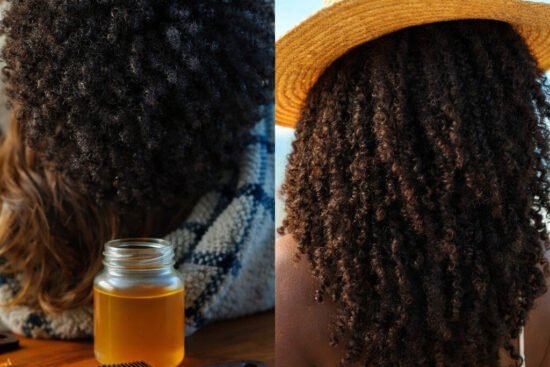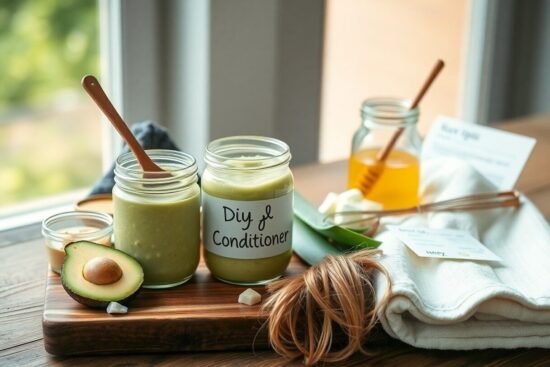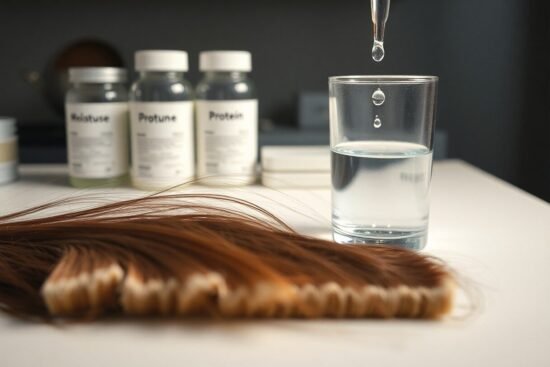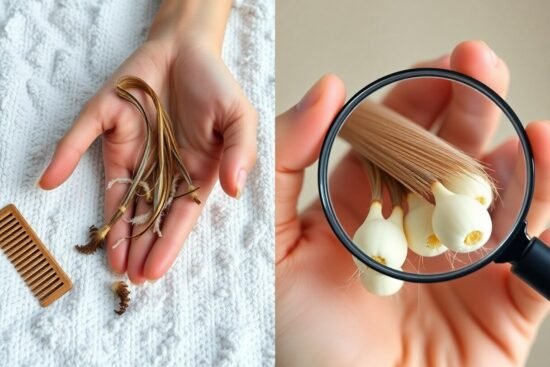
Are you a black woman who wants to keep her hair healthy and strong, but is worried about the damage that frequent washing can cause? We understand your concern and have a solution for you. In this article, we will share some tips and tricks on how to wash your hair without compromising its health. So, if you’re ready to achieve gorgeous, vibrant locks without the fear of damage, keep reading!

Understanding Black Hair’s Unique Structure
Identifying different types of black hair
Black hair is incredibly diverse and comes in various textures and curl patterns. Understanding your hair type is crucial in determining the best care routine. The most common black hair types are categorized as Type 3 (curly) and Type 4 (kinky/coily). These types further differ in subcategories, including Type 3A–3C and Type 4A–4C. Taking note of your hair’s unique characteristics will guide you in choosing the most suitable products and techniques for your hair.
Understanding the inherent dryness and fragility of black hair
One of the distinguishing features of black hair is its natural dryness. This dryness occurs due to the structure of the hair shaft, which makes it challenging for the scalp’s natural oils to travel down the hair strands. Additionally, the coily nature of black hair makes it more prone to breakage. Understanding and accepting this inherent dryness and fragility is essential to tailor a hair care routine that addresses these specific needs.
Recognizing the role of natural oils in black hair
Although black hair is prone to dryness, it does have a built-in protective mechanism: natural oils. These oils, secreted by the scalp, act as a lubricant and provide some hydration to the hair strands. However, due to the tight curls, the oils struggle to travel from the scalp to the hair ends. Recognizing the importance of these natural oils and finding ways to maximize their benefits is key in maintaining the health of black hair.
Establishing a Personalized Hair Care Routine
Determining your hair type
To establish an effective hair care routine, it’s crucial to determine your hair type. As mentioned earlier, black hair falls into various categories, each requiring different care. The best way to determine your hair type is to closely observe your hair’s curl pattern and texture. This knowledge will guide you in selecting appropriate products and techniques tailored to your specific hair type.
Choosing the right products based on hair type
Once you’ve identified your hair type, it’s time to choose the right products. Look for shampoos, conditioners, and styling products specifically formulated for black hair. Avoid products containing sulfates, as they can strip the hair of its natural oils and further exacerbate dryness. Opt for moisturizing and nourishing products that provide hydration, promote elasticity, and enhance curl definition.
Calculating the right frequency of washing for your hair health
Finding the right balance between cleanliness and avoiding excessive washing is essential for black hair health. Washing your hair too frequently can strip away the natural oils and lead to dryness, while infrequent washing can result in product buildup and scalp issues. Generally, washing your hair once a week or every ten days is a good starting point. However, it’s important to listen to your hair and adjust the frequency based on its needs and how it responds to washing.

Product Recommendations
Sulfate-free shampoos
When selecting a shampoo for black hair, opt for sulfate-free options. Sulfates are harsh detergents that can strip away the natural oils, leaving the hair dry and prone to breakage. Look for shampoos that are specifically formulated for curly or coily hair, as these are designed to cleanse the hair without causing excessive dryness.
Moisturizing conditioners
Moisture is vital for black hair, and using a moisturizing conditioner after shampooing is crucial. Look for conditioners that are rich in hydrating ingredients, such as shea butter, aloe vera, or coconut oil. These ingredients will help replenish moisture, nourish the hair, and enhance its natural elasticity.
Deep conditioning products
Deep conditioning is an integral part of any black hair care routine. Regularly using deep conditioning treatments helps restore moisture, repair damage, and improve the overall health of your hair. Look for deep conditioning products that contain ingredients like olive oil, avocado oil, or argan oil. These oils penetrate the hair shaft, providing intense hydration and strengthening the strands.
Optimal Shampooing Techniques
Proper lathering techniques
When shampooing black hair, it’s important to focus on the scalp, where excess oil, dirt, and product buildup are most concentrated. Gently massage the shampoo into the scalp using your fingertips in a circular motion to stimulate blood circulation and effectively cleanse the scalp. Avoid piling the hair on top of the head, as this can cause tangles and unnecessary pulling.
Focusing on the scalp, not the hair
While shampooing, remember that the primary goal is to cleanse the scalp, not the hair itself. The shampoo will naturally cleanse the hair strands as it rinses through them. As black hair is more prone to dryness and breakage, minimizing manipulation and friction during shampooing is essential to maintain hair health.
Rinsing thoroughly to avoid buildup
After shampooing, it’s crucial to rinse your hair thoroughly to remove all traces of shampoo and prevent product buildup. Make sure the water runs clear before proceeding to the conditioning step. Residual shampoo can leave the hair feeling dry, dull, and heavy. Take your time during the rinse and ensure that water reaches all parts of your hair, including the scalp.

Proper Conditioning Techniques
Applying conditioner from mid-length to ends
Unlike shampoo, conditioner should be applied primarily to the mid-lengths and ends of your hair. These areas tend to be drier and more prone to breakage. Use your fingers or a wide-toothed comb to evenly distribute the conditioner, ensuring that every strand is coated. Avoid applying an excessive amount of conditioner to the scalp, as this can weigh the hair down and create buildup.
Leaving conditioner in for the appropriate length of time
To maximize the benefits of your conditioner, leave it in your hair for the recommended amount of time. This allows the ingredients to penetrate the hair shaft and provide deep hydration and nourishment. Refer to the product instructions for guidance on the appropriate duration. Some conditioners may require a few minutes, while others may benefit from longer treatment periods.
Properly rinsing out conditioner
Thoroughly rinsing out the conditioner is crucial to prevent any residue that may weigh down the hair or cause product buildup. Rinse your hair using cool or lukewarm water, as hot water can strip away moisture. Gently run your fingers or a wide-toothed comb through your hair while rinsing to ensure all traces of conditioner are removed.
Preventing Damage During Washing
Avoidance of excessive hot water
As tempting as it may be to take a hot shower, hot water can be detrimental to black hair. It can strip away the natural oils and lead to dryness and breakage. Opt for lukewarm or cool water instead when washing your hair. If you prefer warm water, make sure it’s not excessively hot. This simple adjustment can make a significant difference in the health and appearance of your hair.
Directing water flow down the hair shaft
When wetting your hair or rinsing out products, direct the water flow downward along the hair shaft. This helps minimize tangling and unnecessary pulling, reducing the risk of breakage. To achieve this, lean your head forward and allow the water to cascade down rather than running horizontally across your scalp.
Avoiding harsh rubbing or pulling during washing
Vigorous rubbing or pulling while washing can cause friction and lead to breakage, especially for fragile black hair. Instead, focus on gently massaging the scalp and evenly distributing the products. Delicately use your fingertips or a wide-toothed comb to work through any tangles or knots, starting from the ends and gradually moving upward.

Deep Conditioning and Using Hair Masks
Understanding when to deep condition
Deep conditioning should be incorporated into your regular hair care routine to keep your hair healthy and hydrated. The frequency depends on your hair’s needs, but generally, deep conditioning once every one to two weeks is recommended. You can also assess your hair’s condition and adjust accordingly. If your hair feels dry, brittle, or lacks elasticity, it may be a sign that it needs extra hydration through deep conditioning.
Choosing the right hair mask
When selecting a hair mask for deep conditioning, look for products specifically designed for black hair. These masks typically contain ingredients that provide intense moisture and help repair damage. Consider masks with ingredients such as shea butter, argan oil, or keratin, as these effectively nourish and strengthen the hair.
Applying and rinsing hair masks
Apply the hair mask generously from roots to tips, ensuring that each hair strand is coated. Gently massage the mask into your hair to enhance absorption. Follow the instructions provided with the product to determine the ideal duration for leaving the mask in your hair. Afterward, rinse your hair thoroughly with cool or lukewarm water, making sure to remove all traces of the mask. Leaving the mask in the hair can lead to build-up and weigh the hair down.
Essential Post-Washing Care
Choosing the right tools for detangling
After washing your hair, it’s crucial to detangle it gently and avoid causing unnecessary breakage. Choose a wide-toothed comb, a detangling brush specifically designed for curly and coily hair, or your fingers to remove any knots or tangles. Start from the ends and work your way upward, using a gentle, downward motion. Gradually detangle smaller sections until your entire head of hair is knot-free.
Applying leave-in conditioners
Leave-in conditioners are a valuable addition to your post-washing routine as they help retain moisture and provide ongoing nourishment. Apply a small amount of leave-in conditioner to damp hair, focusing on the ends and areas prone to dryness. Gently massage or scrunch the product into your hair to aid absorption. Leave-in conditioners also help to define curls and reduce frizz, promoting a more polished and healthy appearance.
Air-drying technique to reduce damage
Air-drying your hair is the ideal method to reduce damage after washing. Pat your hair gently with a microfiber towel or an old t-shirt to remove excess water. Avoid rubbing or vigorously twisting your hair, as this can cause friction and damage delicate strands. For best results, let your hair air-dry naturally, avoiding heat styling tools whenever possible.

Maintaining Hair Health Between Washes
How to keep hair moisturized
Moisturizing your hair between washes is crucial to combat dryness and prevent breakage. Use a water-based moisturizing spray or a leave-in conditioner to hydrate your hair daily. Focus on the mid-lengths and ends, as these areas tend to be drier. Additionally, seal in the moisture with a light oil or butter, such as jojoba oil or shea butter, to help lock in hydration.
The role of protective hairstyles
Protective hairstyles play a significant role in maintaining the health of black hair between washes. Braids, twists, buns, or updos can help shield the hair from environmental factors, reduce manipulation, and minimize friction. Ensure that your protective style does not pull too tightly, as this can cause tension and lead to breakage. Remember to moisturize and care for your hair even while it’s in a protective style.
Using dry shampoo effectively
Dry shampoo can be a valuable tool to refresh your hair between washes and absorb excess oil. However, when using dry shampoo on black hair, it’s crucial to choose a product specifically formulated for darker hair tones. This helps prevent visible white residue. Apply the dry shampoo sparingly to the roots, focusing on sections that may appear greasy. Gently massage or brush through your hair to distribute the product evenly.
Addressing Common Black Hair Problems
Dandruff and dry scalp treatment strategies
Dandruff and dry scalp can be common concerns for black hair. To address these issues, incorporate a regular scalp treatment routine. Use a gentle exfoliating scalp scrub once a month to remove dead skin cells and promote a healthy scalp environment. Additionally, look for shampoos and conditioners containing ingredients like tea tree oil or peppermint oil, as these have antimicrobial properties that can help alleviate itching and flakiness.
Preventing and repairing split ends
Split ends can hinder healthy hair growth and lead to further damage. To prevent split ends, regularly trim your hair every six to eight weeks. Protect your hair from excessive heat, friction, and manipulation, as these can contribute to split ends. If split ends occur, consider using a repairing hair serum or oil specifically designed to target and mend damaged ends.
Correcting over-processed or damaged hair
Over-processing and damage can occur from excessive use of heat styling tools, chemical treatments, or improper care. To revive and restore damaged hair, focus on deep conditioning treatments, protein-based treatments, and moisturizing products. Limit the use of heat styling tools and opt for protective hairstyles that allow your hair to heal and recover. With time, patience, and proper care, you can gradually reverse the damage and regain healthier, more resilient hair.
In conclusion, understanding and catering to the unique needs of black hair is essential in establishing a personalized and effective hair care routine. By identifying your hair type, selecting suitable products, and employing proper techniques, you can maintain the health, moisture, and strength of your hair. Remember to embrace your hair’s natural beauty and treat it with the care and attention it deserves.











